Green Wednesday: Napa’s Mammoths and Mastodons + Shade Gardening
By Kathleen Scavone, Environmental Contributor, and Rainer Hoenicke, UC Master Gardener of Napa County
The devastating fires in Los Angeles County have left many in need, and thanks to our readers, we’ve been able to help. Because of your support, Napa Valley Features donated $300 in January to the Los Angeles Regional Food Bank. Due to the ongoing need and the generosity of our community, we’re extending this effort through Feb. 15, with 10% of all new paid subscriptions going toward relief. Your support truly makes a difference — thank you.
NAPA VALLEY, Calif. — Every Wednesday, Napa Valley Features includes posts from environmental voices and the UC Master Gardeners of Napa County who share research-based horticultural advice. Together, these contributors provide valuable insights into sustainable gardening practices and climate-related topics relevant to our region.
Summary of Today’s Stories
"Take Advantage of Shady Spots for Lovely Gardens" by Rainer Hoenicke, U.C. Master Gardeners of Napa County: This article explores how to make the most of shaded areas in your garden, highlighting shade-loving plants that thrive in dry conditions and the importance of observing sunlight patterns to ensure success.
"The key to successful shade gardening is to observe the movement of sunlight throughout the day and throughout the year." - Rainer Hoenicke
"Pondering the Past: Mammoths and More" by Kathleen Scavone, Environmental Contributor: A fascinating look at the prehistoric wildlife of Napa Valley, this piece delves into fossil discoveries and expert research suggesting that mammoths, mastodons and other Ice Age creatures once roamed the region.
"Napa Valley would have had the same kinds of Rancholabrean critters found elsewhere in the San Francisco Bay Area. Some of these animals were year-round residents, like deer and mountain lions, and maybe mastodons, too, while others were migratory such as mammoth, bison, horse, camel and saber-tooths, coming and going based on the season and the availability of lush pastures and preferred prey animals." - Kathleen Scavone
Pondering the Past: Mammoths and More
By Kathleen Scavone
NAPA VALLEY, Calif. — During a visit to the Historic Courthouse Museum in Lake County, I considered the display of a mammoth molar that resides in the geology room. I recalled that past museum curator Tony Pierucci and other researchers discovered that the mammoth molar fossil was exposed in 1962 at Alder Creek just off Bottle Rock Road on Cobb Mountain and identified in San Francisco by a Division of Mines and Minerals geologist.
Mammoths roaming Lake and Napa counties? These giant animals are understood to have weighed up to 16,000 pounds and averaged about 50 years in age. Try to wrap your mind around what is now northern California's Bay Area as it was in the Pleistocene era of 2 million years ago. Envision a herd of Columbian mammoths (Mammuthus columbi) roaming upon what past California State Park Senior State Archaeologist E. Breck Parkman describes as the California Serengeti via numerous papers, lectures, YouTube videos and more.
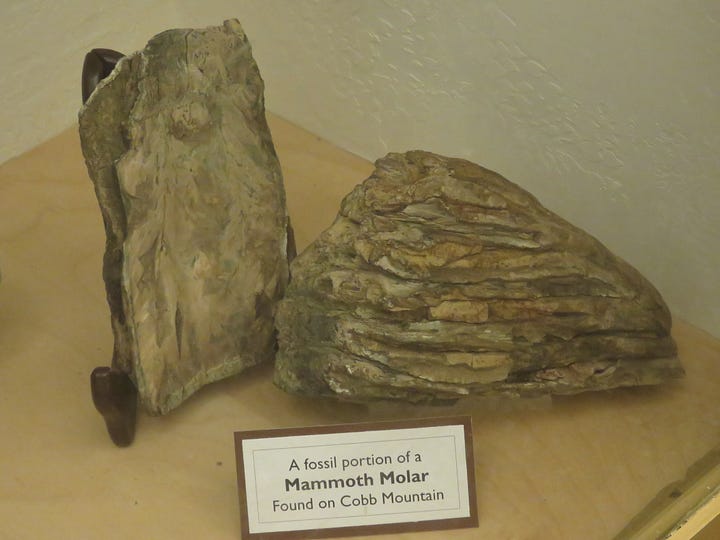
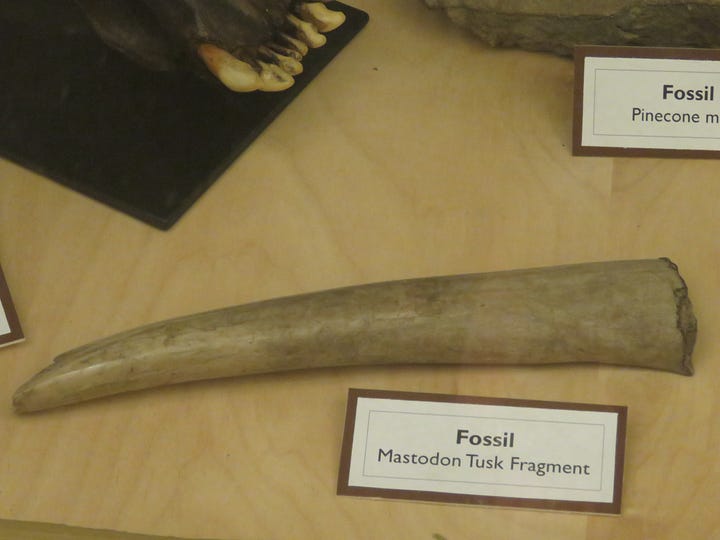
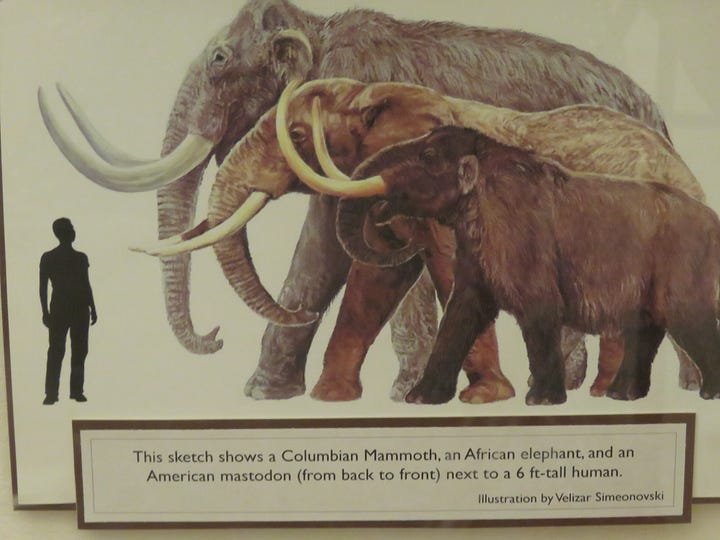
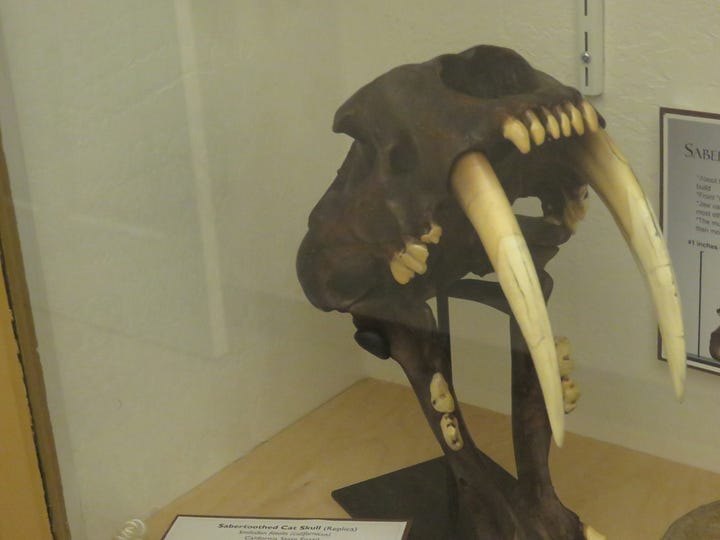
Parkman explained in a recent email that he didn't locate information specific to Napa County during the Ice Age but added, "That said, I would expect Napa Valley to have had the exact same animals as the rest of the San Francisco Bay Area did during the Ice Age."
In Napa, Lake and the rest of the Bay Area, experts agree that both the Columbian mammoth and the American mastodon (Mammut americanum) roamed; however, we didn't have the woolly mammoth (Mammuthus primigenius) since they occurred in the harsher climes of the areas farther north.
Parkman is interested in the mammoth due to his work with the so-called rubbing rocks in Sonoma County, which are unique features he discovered in 2001, when he conducted a weeklong study of the Sonoma Coast's Kortum Trail to learn of and identify paleontological resources. He was working alongside a paleontologist friend, Raj Naidu, when they took note of the unique polish on the rocks around them.
In his November 2006 report titled “The California Serengeti: Two Hypotheses Regarding the Pleistocene Paleoecology of the San Francisco Bay Area” he discussed the creatures of the Bay Area during the Ice Age. He said, "Napa Valley would have provided just under 100,000 acres of ‘pasture’ for herds of grazing animals, such as bison, horse, camel, and mammoth. And with the presence of these big herbivores, there would have been carnivores, too, like the saber-toothed cat and short-faced bear. According to the model I proposed for elsewhere in the Bay Area, I would expect the carrying capacity for the Napa Valley at 18,000 BP (Before Present) to have been sufficient for 20 mammoths at any one time and as many as 6,400 bison. As far as large predators go, I think there was a carrying capacity that would have allowed for around 13 saber tooths and 13 short-faced bears. I figure a ratio of about 144 large herbivores to one large predator."
Parkman's study spans the area to the west of the Carquinez Strait. He said, "Like Sonoma Valley, Napa Valley would have been an ideal side pasture for migrating herds moving between seasonal pastures. This main migration route passed through what is now the Carquinez Strait and on out to the coastal shelf (my Farallon Plain) via the Golden Gate. I envision an East-West migration pattern, with animals spending their summers on the coast and winters in interior areas including Napa Valley. I've yet to determine the relationship of the Central Valley to what I call the California Serengeti (the area from Cloverdale south to San Juan Baustista and from the Carquinez Strait west to the Farallons). Adding the Central Valley to the model would greatly increase acreage and corresponding animal estimates, but not necessarily the carrying capacity."
Since there are undoubtedly fossil discoveries in the Napa Valley of which Parkman says he is unaware, he believes that the Napa Valley is incredibly rich in terms of archaeological sites and more than likely true as well for fossils. The problem in identifying such fossil sites, he believes, is that since the area has been intensively planted with vines and other agricultural crops, fossils may have been unearthed during farming operations or other developmental projects and possibly gone unreported since those kinds of projects are often exempt from scientific review.
In a nutshell, Parkman said, "Napa Valley would have had the same kinds of Rancholabrean critters found elsewhere in the San Francisco Bay Area. Some of these animals were year-round residents, like deer and mountain lions, and maybe mastodons, too, while others were migratory such as mammoth, bison, horse, camel, and saber-tooths, coming and going based on the season and the availability of lush pastures and preferred prey animals."
When the Ice Age ended around 11,700 years ago, many animals became extinct, and other animals began locating into the vacated eco-niches.
"I imagine the grizzly bear was found mostly in the foothills during the Ice Age, as the valley floor would have been the kingdom of the short-faced bear,” Parkman said. “But with the short-faced bear extinct, nothing stopped the grizzly bear from expanding its territory. And as the grizzly spread out, I suspect the black bear expanded its range, as well, assuming more foothill and forestland than before."
A sense of wonder ensues at the thought of herds of what might have roamed here in the past. Wildlife such as mammoths, mastodons, camels, bison and more journeying to and fro in the Napa Valley and beyond is truly mind-boggling. Discovering the past is a treasure box to unpack that gives us much to gain in knowledge, replete with beauty and ever-changing natural landscape.
If today's story captured your interest, explore these related articles:
Birdwatching in Napa County Reveals Avian Wonders and Conservation Champions
Calistoga's Old Faithful Geyser: From Tourist Trap to Natural Wonder
Explore all Napa Valley Features stories on our main page.
Kathleen Scavone, M.A., retired educator, is a potter, freelance writer and author of “Anderson Marsh State Historic Park: A Walking History, Prehistory, Flora, and Fauna Tour of a California State Park,” "People of the Water" and “Native Americans of Lake County.” She loves hiking, travel, photography and creating her single-panel cartoon, “Rupert.” She can be reached through her website: KathleenScavone.com
Take Advantage of Shady Spots for Lovely Gardens
By Rainer Hoenicke
NAPA VALLEY, Calif. — Shady areas in a garden tend to cause a lot of head-scratching. These spots often confound gardeners who haven’t yet learned that many attractive plants thrive in dry shade. Some shade-loving plants have colorful foliage that provides as much delight as a bright flower patch in full sun.
Take a walk through local woodlands and you’ll find an abundance of understory plants that are doing well beneath the oaks, big-leaf maples and California laurel trees, some in deep shade.
Many native plants, including some ferns, are adapted to dry shade. We are fortunate that many non-native plants from regions with dry summers tend to grow well in Napa County without becoming invasive. Also, as our winters become warmer, we can introduce more semitropical shade-lovers, as long as they are able to get some supplemental water. I keep a bucket in the shower to collect the water until it heats up sufficiently.
The majority of my yard is shaded by large trees and shrubs whose roots are likely reaching deep enough to find groundwater. My neighborhood used to be a seasonal wetland. Now the natural vegetation has given way to acres of asphalt, cement, rooftops and other impervious surfaces. This hardscape causes the City of Napa to have much higher temperatures than the surrounding rural areas. As a result, I am grateful for the tree and shrub canopies that keep my back and side yards cool.
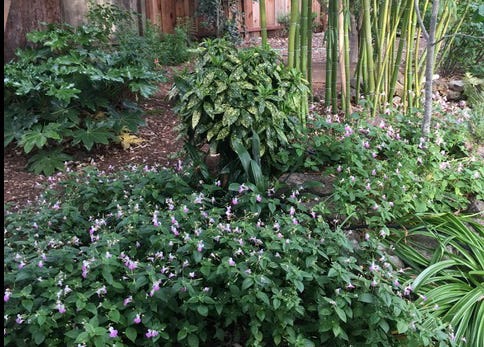
For the past 25 years, I have experimented with plants that might thrive under both Sierra and coastal redwoods, Japanese maples, a huge Mexican ash, a 30-foot valley oak and mature Japanese viburnums. I have discovered many plants that thrive in shade, and I have “trained” some of them to adapt to dryer summers than they would encounter in their native habitats.
Many perennial plants tolerate full sun in summer but only in climates much cooler than ours. Here such plants can do well in partially shaded spots where afternoon temperatures stay cooler.
As someone recently said to me, there are “shades of shade.” Light shifts with the path of the sun. Observe your landscape carefully to see how your shady areas change over the course of a day, season and year. How long does that shady spot under a tree or along a fence stay shady in midsummer? How long does the morning sun provide bright light before switching to deep shade in the afternoon?
The aspiring shade gardener needs to take multiple variables into account when selecting appropriate plants. Deep shade from dawn to dusk in winter may be appropriate for a deciduous shrub, a dormant hosta or Japanese forest grass. Such plants might also tolerate a few hours of direct morning sun in summer but would burn to a crisp if exposed to blazing sun during the hottest months.
A bit of risk-taking can be rewarding when experimenting with shade plantings. Many plants will recover if you correct the situation when you see that they don’t thrive. I have made it a habit of taking photos throughout the year to document plant growth and health, fruit yields and wildlife visitors. The photos supplement my periodic notes in a garden journal.
In our Napa Valley climate, shady areas might provide as much or more joy to you and your guests (animal and human) as those sunny flower and veggie beds. And you can usually find some plant cultivars that don’t mind a sunnier shade or shade under a tree with an open canopy. Maybe they’ll get less sun than they’re accustomed to, but it’s enough.
The key to successful shade gardening is to observe the movement of sunlight throughout the day and throughout the year. Then make mental or written notes or a visual record so you can add the right plants to that neglected patch.
Events
Library Talk: Join UC Master Gardeners of Napa County for a talk on “Planning a Cut Flower Garden,” on Thursday, March 6, from 7 to 8 p.m., via Zoom. This summer your garden can include beautiful, colorful flowers to cut and bring into your home. Join the UC Master Gardeners of Napa County to learn about the best annuals, biannuals and perennials for cutting, along with soil preparation tips, starting seeds indoors and direct seeding techniques. Click here to register.
Workshop: Join UC Master Gardeners of Napa County for a workshop on “Spring and Summer Vegetables” on Saturday, March 8, from 10 am to noon, at the University of California Cooperative Extension, 1710 Soscol Ave., Suite 4, Napa. Come get your hands dirty in this hands-on vegetable-growing workshop. Learn what to plant now and what to plant later when the weather warms. Soil prep, irrigation, seed-starting, transplanting and potential problems: We’ll cover it all. Click here to register.
Help Desk: The Master Gardener Help Desk is available to answer your garden questions on Mondays and Fridays from 10 a.m. until 1 p.m. at the University of California Cooperative Extension Office, 1710 Soscol Ave., Suite 4, Napa. Or send your questions to mastergardeners@countyofnapa.org. Include your name, address, phone number and a brief description of the problem. For best results attach a photo.
If today's story captured your interest, explore these related articles:
Explore all Napa Valley Features stories on our main page.
Rainer Hoenicke is a UC Master Gardener of Napa County.
The views, opinions and data presented in these articles are those of the authors and do not necessarily reflect the official policy, position or perspective of Napa Valley Features or its editorial team. Any content provided by our authors is their own and is not intended to malign any group, organization, company or individual.









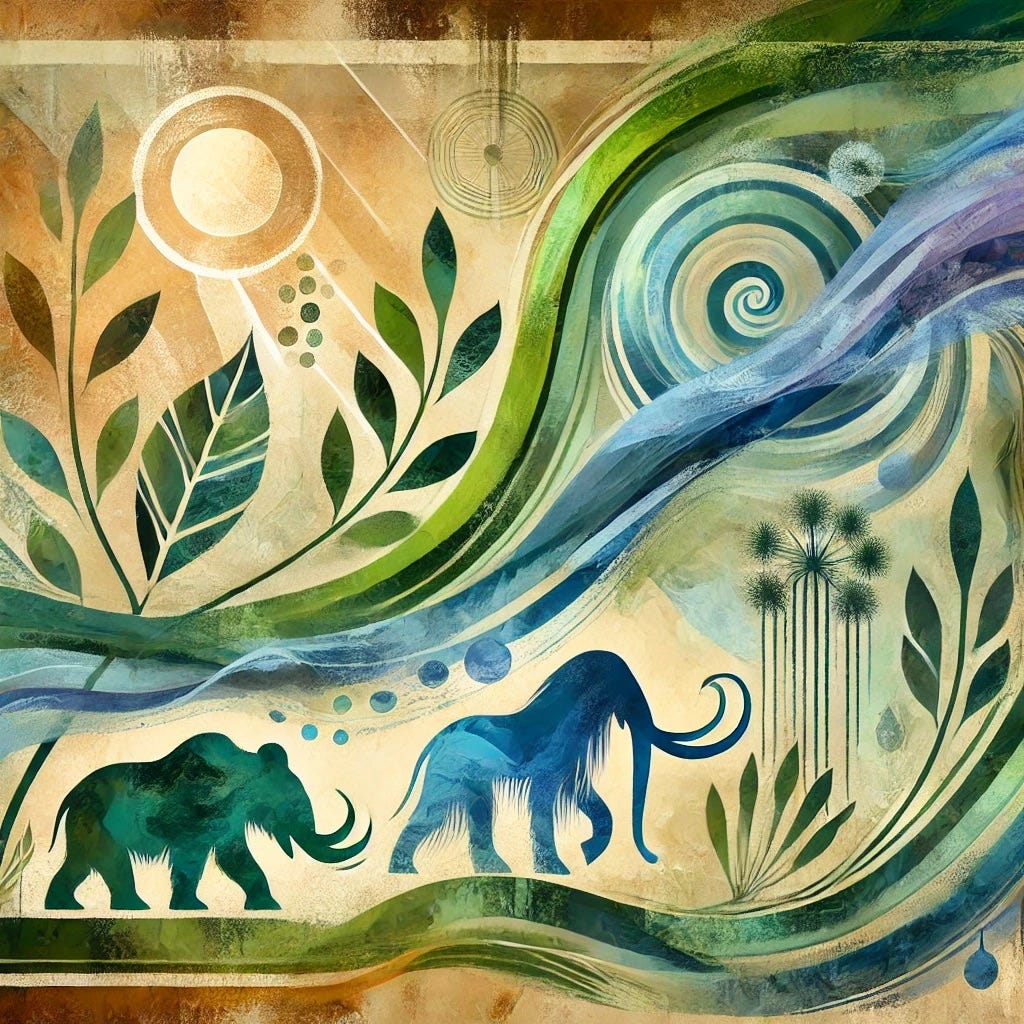
Good article Rainer! I wish I had more shady spots!
My sunny spots have become more shady as the redwoods my husband planted have become huge. thanks for information